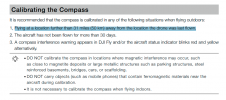So disappointed and honestly scared to buy another
I fly a
Mini 2 and I know the excitement you must have been going through when it first arrived, but you must know that flew it before the Drone was ready and obviously before you were ready. I'm willing to guess that you even flew it at night (low light warning) and probably in your back yard (hit a wall…).
There is a lot advice that the members have already offered and I do not know if yu will follow it or not, but I will offer you Beginner's Advice, fit for a noob in case you decide to do this again…
You are in San Diego so there are a couple of Legal Things you need to do… Register your Drone; that can be done at the FAA Web Site. You also need to get your TRUST Certificate. You can get that at the Pilot Institute Web Site (FREE…) .

faadronezone.faa.gov
FAA TRUST Online Portal for Recreational Drone Operators - Pilot Institute
Do not let the excitement of the moment get the best of you. When you are going out to fly, do it slowly and deliberately. Get used to a set procedure and even practice it.
Plug in your phone/tablet into your controller; turn on the Controller and DJI Fly App (if it does not start on its own…). On the Drone, open the front legs, then open the back legs, then remove the Gimbal Cover.
The Gimbal is the most delicate item on the Drone and banging or bumping can damage it. I also fastened a short "Remove Before Flight" ribbon to the cover so it's more noticeable and I do not forget to remove it…
Turn on the drone and watch it come to "life." Watching the Gimbal go through its self-check is almost like watching a kitten or puppy opening its eyes for the first time…
Place the drone down (preferably on a Landing Pad) while it finishes its self-test (collecting satellites, etc…).
Check your battery status (Phone, Drone, and Controller), check the Signal Strength, by now the Controller should have reported it updated the Home Point.
Lift off, 4-5 feet (1-1/2 meters) or so, hover a bit, check the controls (move the drone a bit forward, back, left, right, yaw left and right). By now, your Controller will probably report again, Home point Updated.
If you go out in a rush and race thru your start up and take off before the drone has finished it prep, it may update its Home Point over that pond or that old tree you are flying over and in your excitement, you'll fly the drone long past it Low Battery point and when it engages Return to Home and lands in the pond or in a tree; it will be all on you…
Now go have fun, learn to fly the drone by sight before you try to fly it out a distance depending on the video feed, FPV.
I would also advise you to use YouTube and watch a lot of the Videos on flying and setting up the Drone. When it is too dark, too cold, or too wet, you can "fly it vicariously" through YouTube. Also watch some of the Blooper Drone Videos and learn how not to fly your "New Baby."
Below is the link to all of the downloads offered by DJI for the
Mini 2. You will also find the 75-page User's Manual, in case your Drone did not come with one.
After you read the Manual, read it again, you will be surprised what you missed the first time and you will be better prepared for that next "scary moment…"
DJI Mini 2 - Download Center - DJI
Happy and Safe Droning…












